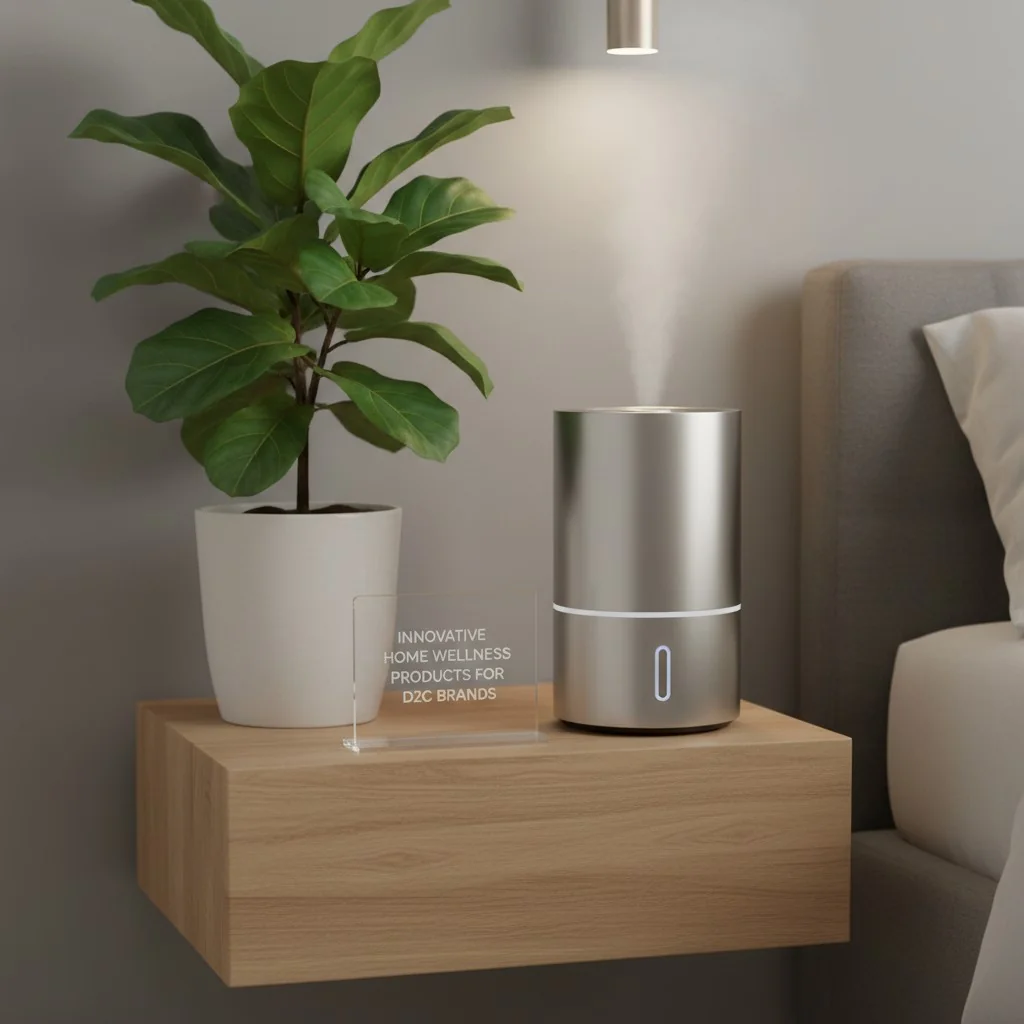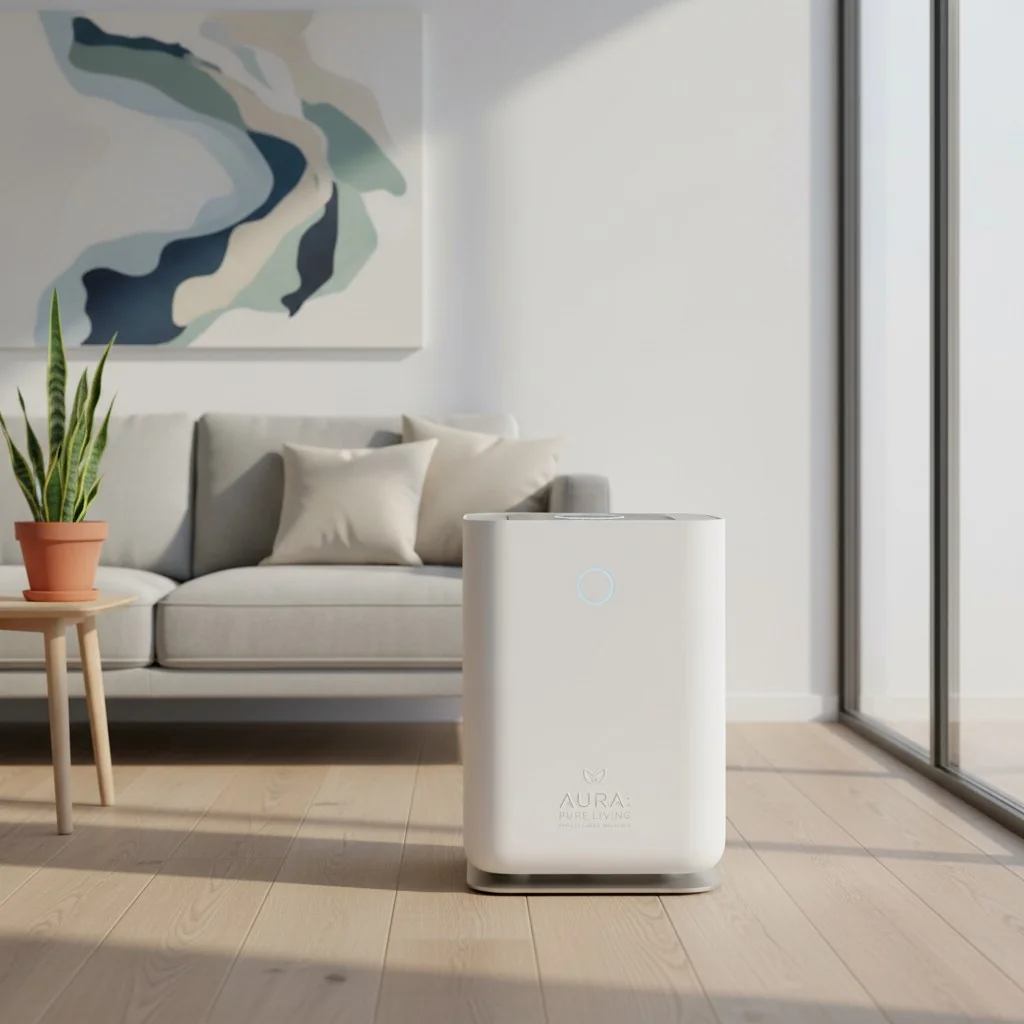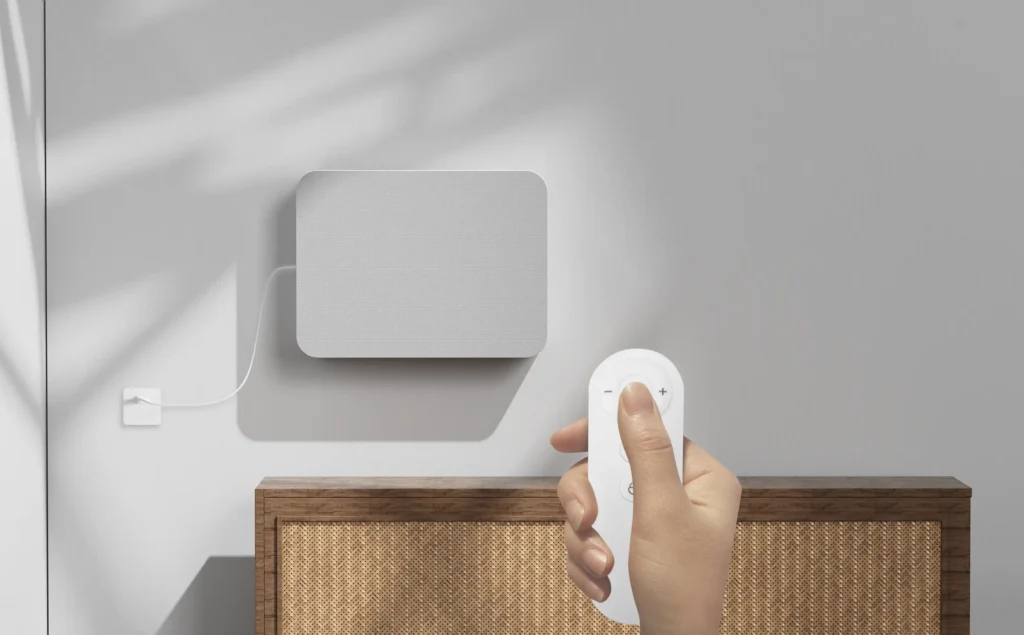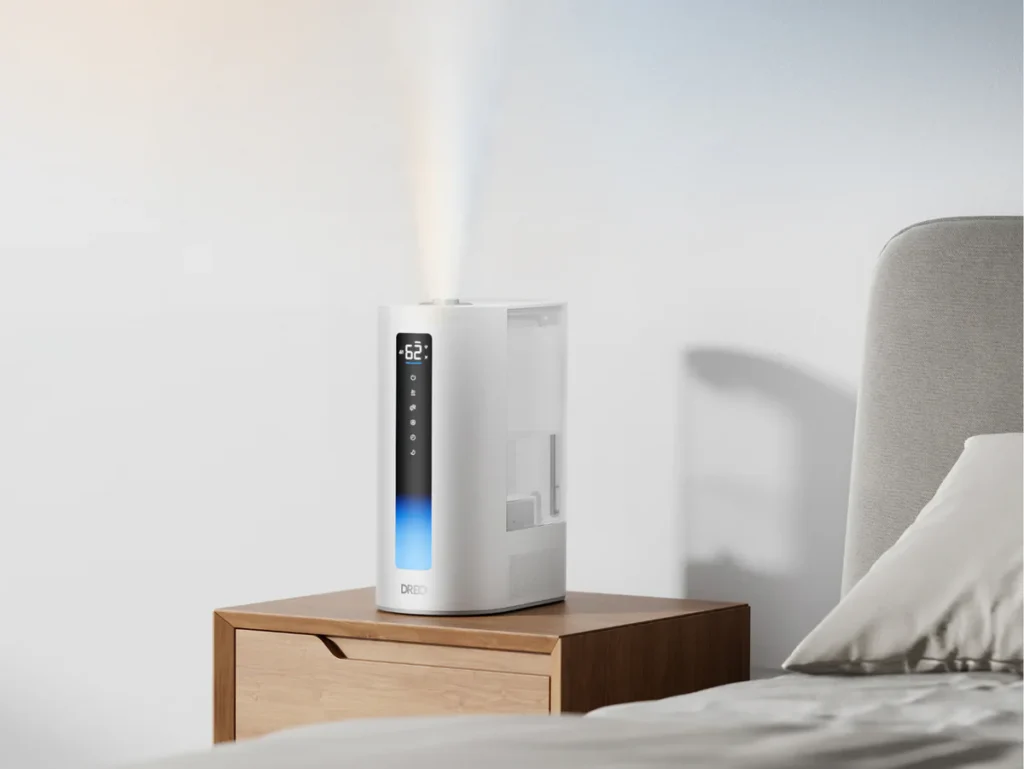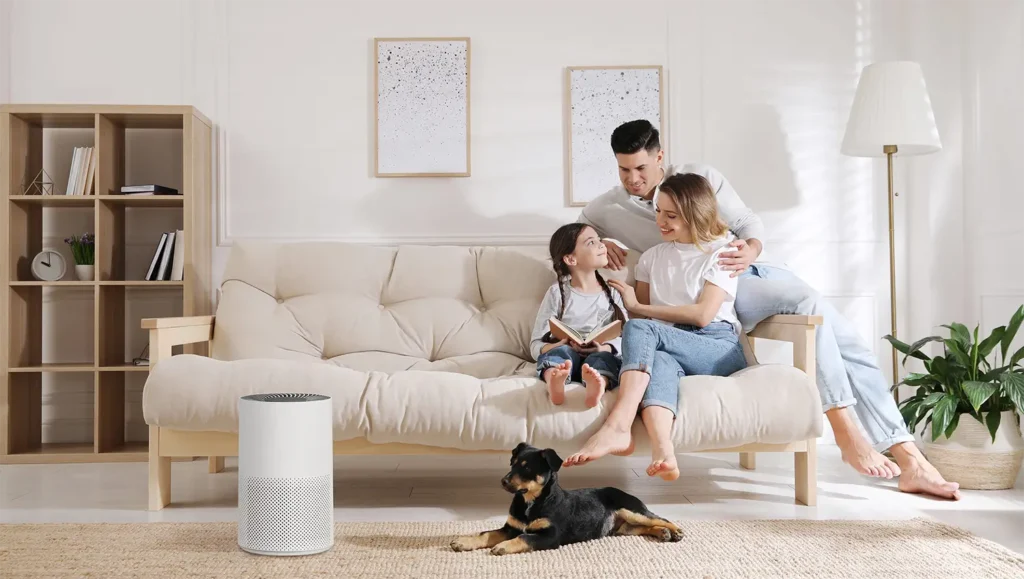Last winter, I got tired of dragging our air purifier around the house like a lost pet. Kitchen smells? Move the purifier. Daughter's allergies acting up? Drag it to her room. Wildfire smoke creeping in? Back to the living room it goes. After months of this dance, I realized something obvious: one machine can't handle an entire home's air quality needs.
Most families still think buying a bigger, more expensive air purifier will solve their problems. But here's what I've learned after working with hundreds of families: the smart money isn't on single devices anymore. It's on building what we call a "Home Air System" – multiple devices working together to keep your whole house breathing clean.
The difference is night and day. Instead of playing air quality whack-a-mole, these families have systems that automatically handle everything from cooking odors to wildfire smoke, bedroom allergies to basement mustiness. And surprisingly, it often costs less than buying multiple standalone purifiers.
What Exactly Is a Home Air System?
Think of your home's lighting. You don't have one giant bulb trying to illuminate every room. You have different lights for different purposes – bright task lighting in the kitchen, soft ambient lighting in bedrooms, focused reading lights in the study. A Home Air System works the same way.
Instead of one purifier struggling to clean 2,000+ square feet, you have specialized devices handling specific jobs:
| Компонент | What It Does | Where It Goes |
|---|---|---|
| Main HEPA Purifier | Heavy-duty particle removal | Living room/main area |
| Bedroom Units | Quiet overnight cleaning | Each bedroom |
| Humidity Control | Moisture management | Whole house zones |
| Kitchen Filter | Cooking odors and grease | Kitchen/dining area |
| Умные датчики | Monitor and coordinate | Throughout the house |
The magic happens when these devices talk to each other. Smoke detected in the kitchen? The system boosts filtration there while protecting the bedrooms. Pollen count spiking outside? Bedroom units ramp up before you even wake up.
Sarah from Portland told me: "I used to check three different air purifiers every morning, adjusting settings and moving them around. Now I just live my life while the system handles everything automatically."
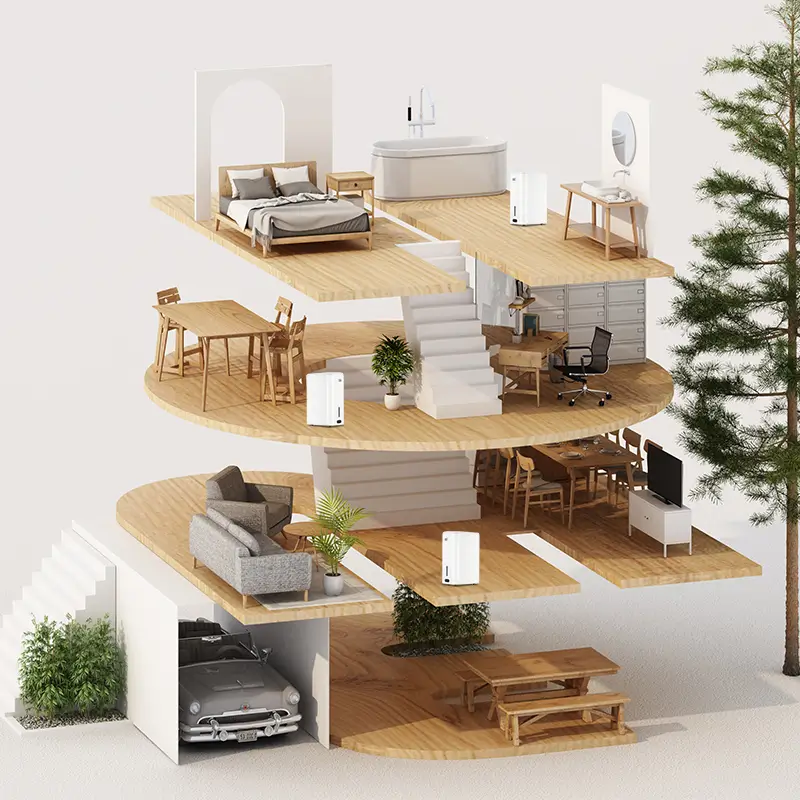
Why Single Purifiers Can't Cut It Anymore
I've seen too many families frustrated with their expensive single purifiers. Here's why they struggle:
Coverage Problems
Most purifiers work great in a 300-400 square foot room. But air doesn't magically flow through walls and around corners. I tested one family's $700 purifier in their Denver home. Great air quality in the living room, terrible readings just 20 feet away in the master bedroom.
The average American home is over 2,000 square feet1. Even "whole house" purifiers lose effectiveness with distance, furniture, and closed doors.
They Only Do One Thing
Air purifiers purify air. That's it. But real homes have multiple air quality challenges:
- Dry winter air causing nosebleeds and static
- Humid summers promoting mold growth
- Cooking odors that linger for hours
- Pet dander concentrated in certain areas
- Seasonal pollen overwhelming filters
A family in Phoenix had a great purifier for dust, but their kids were getting nosebleeds from 15% humidity. They needed moisture control, not just filtration.
Seasonal Overwhelm
During wildfire season, I watch families panic as their single purifier gets overwhelmed. PM2.5 levels spike from 15 to 150 μg/m³ in hours, and one device can't keep up. Meanwhile, families with integrated systems automatically seal and purify their entire home.
The Cost Trap
Here's the kicker: families often end up buying multiple single purifiers anyway. I've seen homes with four or five units scattered around, each working independently. The total cost2? Often 40-60% more than a planned integrated system.
| Approach | Upfront Cost | 3-Year Total | Эффективность |
|---|---|---|---|
| One Premium Unit | $800 | $1,250 | Poor (limited coverage) |
| Multiple Singles | $2,400 | $4,200 | Inconsistent |
| Integrated System | $1,800 | $2,520 | Превосходно |
How Home Air Systems Change Everything
The transformation I see in families is remarkable. Here's what changes:
Complete Home Protection
Instead of "safe rooms" and "problem areas," every room maintains consistent air quality. The Martinez family's 8-year-old daughter had severe астма3. After installing their system, her inhaler use dropped 80% in six months. More importantly, her parents stopped worrying about which rooms were "safe."
Smart Automation That Actually Works
Modern systems learn your family's patterns. The Chen family's system knows their teenager's allergies peak at 7 AM during spring, so it pre-filters his room starting at 5 AM. It recognizes when mom's working from home and needs extra VOC filtration during video calls.
No more manual adjustments or constant monitoring. The system handles seasonal changes, daily routines, and unexpected events automatically.
Real Energy Savings
The Thompson family in Toronto cut their electricity bill by $47 monthly after installing their system. How? Integrated systems coordinate operations instead of running everything at maximum power constantly.
Smart sensors detect when air is already clean and dial back power consumption. They share workload efficiently and avoid the energy waste of multiple independent units fighting each other.
Adapts to Life Changes
Life happens. New baby? Add nursery-specific filtration. Adopt a pet? Enhance dander control. Grandparents moving in? Boost medical-grade filtration in their area.
With single purifiers, each change means buying new equipment and often discarding previous investments. Integrated systems expand and adapt while protecting your original investment.
Building Your Own Home Air System
Don't worry – you don't need to install everything at once. Here's how smart families build their systems:
Week 1-2: Assessment
Before buying anything, understand your specific challenges. Get a portable air quality monitor4 and test each room for a week. Track PM2.5, humidity, VOCs, and CO2.
You'll discover patterns you never noticed. One family found their biggest problem wasn't outdoor pollution – it was VOCs from their attached garage seeping into the home office every afternoon.
Week 3-4: Foundation
Start with three core components:
Central HEPA Unit: Medical-grade (H13/H14 filter) in your main living area. Size it for 1.5x your room's square footage to ensure adequate air changes.
Humidity Control: Humidifier for dry climates, dehumidifier for humid areas. Maintaining 40-60% humidity5 is crucial for health and system efficiency.
Smart Hub: Choose one supporting Matter protocol so all devices can communicate regardless of brand.
| Компонент | Cost Range | Установка |
|---|---|---|
| HEPA Purifier | $400-$800 | 30 minutes |
| Humidity Control | $200-$500 | 45 minutes |
| Smart Hub | $100-$300 | 2-3 hours |
Week 5-8: Zone Expansion
Add targeted solutions based on your assessment:
- Bedroom purifiers for family members with allergies or sleep issues
- Kitchen filtration for cooking odors and grease
- Home office units for productivity (poor air quality hurts cognitive performance6)
- Entryway filtration where outdoor pollutants enter
Week 9-10: Automation Setup
This is where the magic happens. Program your system to respond automatically:
- If PM2.5 exceeds 25 μg/m³ anywhere, boost filtration in that zone
- If humidity drops below 35%, gradually activate humidifiers
- During sleep hours, reduce fan speeds while maintaining effectiveness
- Create "modes" for different situations (allergy season, wildfire, away from home)
Ongoing: Optimization
The best systems improve over time. Review monthly data to identify optimization opportunities. Many families reduce energy consumption 20-30% after the first month of data analysis.

Who Benefits Most?
While every family can benefit, certain situations make Home Air Systems particularly valuable:
Health-Sensitive Families
- Kids with asthma or allergies
- Elderly family members with respiratory issues
- Anyone with chemical sensitivities
- Families with compromised immune systems
Geographic Risk Areas
Wildfire Zones (West Coast, Canada): Systems can automatically seal and purify during smoke events, often eliminating the need for evacuation.
High Pollen Areas (Southeast, Texas): Predictive filtration based on pollen forecasts dramatically reduces allergy symptoms.
Urban Areas: Constant low-level pollution exposure creates cumulative health impacts that whole-home filtration significantly reduces.
Lifestyle Factors
- Multi-generational homes: Different age groups have different air quality needs
- Work-from-home families: Spending 12+ hours daily indoors makes air quality critical
- Владельцы домашних животных: Multiple pets create ongoing challenges single purifiers can't handle
- Cooking enthusiasts: Frequent cooking creates air quality impacts throughout the home
The Tipping Point
Some families reach a breaking point with their current approach:
- Constantly managing multiple devices
- Some rooms feel fresh while others remain problematic
- Dreading certain seasons because current solutions prove inadequate
- Growing health concerns despite using air purifiers
Bottom Line: Cleaner Air, Less Hassle, Lower Cost
The families making this transition aren't just buying better equipment – they're investing in peace of mind. They're moving from reactive problem-solving to proactive protection.
The technology is finally mature enough to make this accessible. IoT connectivity, AI automation, and smart home integration7 have transformed what was once expensive and complex into something most families can implement.
For families still struggling with single purifiers, the question isn't whether to upgrade – it's when. The gap between what single devices can deliver and what modern families need keeps growing.
Start with the assessment phase. Understand your current challenges, then build systematically toward comprehensive protection. Your family's health is worth the investment, and the peace of mind from knowing every breath in your home is clean is priceless.
The future of home air quality is here. It's integrated, intelligent, and designed around real family needs. The only question is: will you be among the families who embrace this transformation, or will you keep struggling with yesterday's limitations?
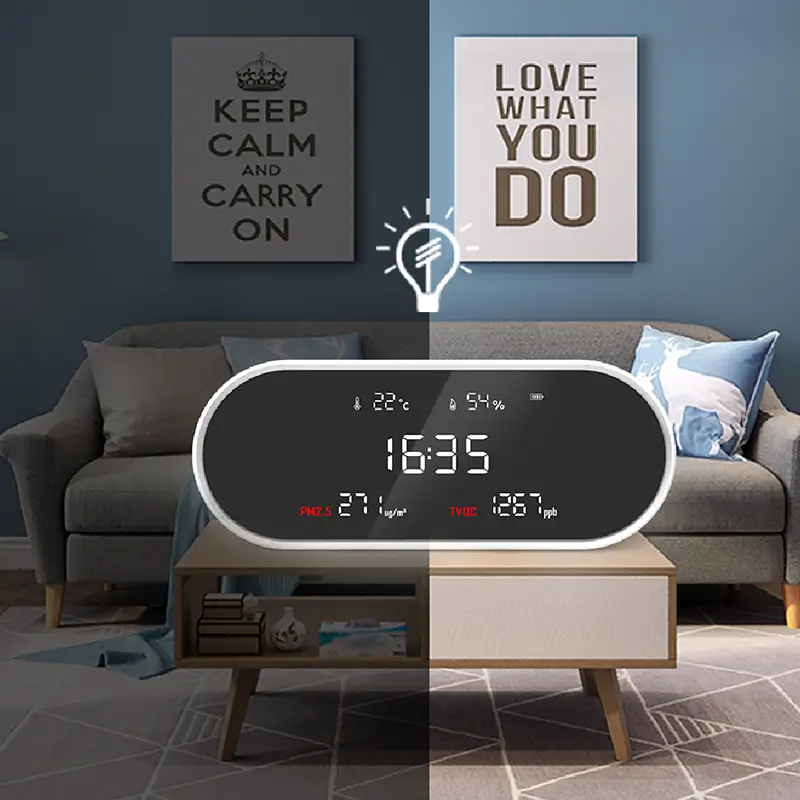
Real-Life Success Stories
Let me share some stories that illustrate why families are making this switch:
Seattle: A Wildfire Wake-Up Call
The Johnson family thought their $600 air purifier was enough until last summer's wildfire season. When smoke rolled in, their single unit couldn't keep up. They spent three days at a hotel while their neighbors with integrated systems stayed home comfortably.
"That hotel bill was more than the cost difference between our single purifier and a proper system," Mark Johnson told me. "We installed our Home Air System that fall and sailed through this year's fire season without leaving home once."
Phoenix: A Humidity Revelation
Lisa Chen's family struggled with constant nosebleeds and static electricity despite running their air purifier 24/7. The problem wasn't particles – it was 12% humidity in their desert home.
"We were so focused on filtration that we ignored humidity," Lisa explained. "Adding smart humidity control to our system eliminated the nosebleeds within a week. My kids stopped getting shocked every time they touched a doorknob."
Toronto: An Allergy Breakthrough
The Williams family had tried everything for their son's severe allergies – medications, diet changes, even considering moving. Their single bedroom purifier helped a little, but symptoms persisted.
After installing a whole-home system with predictive pollen filtering, their son's allergy symptoms dropped dramatically. "The system starts filtering his room before pollen counts spike," his mother Sarah explained. "It's like having a crystal ball for allergies."
Avoid These 5 Costly Home-Air Mistakes
After helping hundreds of families, I've seen the same mistakes repeatedly:
Mistake #1: Starting Too Big
Don't try to build the perfect system overnight. Start with your foundation (main purifier, humidity control, smart hub) and expand gradually. Families who try to install everything at once often get overwhelmed and make poor choices.
Mistake #2: Ignoring Humidity
Many families focus solely on particle filtration and ignore humidity control. But humidity affects everything from virus survival to dust mite populations to your comfort. It's not optional – it's essential.
Mistake #3: Buying Incompatible Devices
Stick with devices that support common protocols like Matter, Zigbee, or Z-Wave. I've seen families with five different apps trying to manage their "integrated" system. That's not integration – that's chaos.
Mistake #4: Forgetting Maintenance
Smart systems can predict when filters need changing and optimize performance automatically. But they still need basic maintenance. Set up automated filter deliveries and stick to the schedule.
Mistake #5: Overlooking Professional Help
While these systems are more accessible than ever, don't hesitate to consult with an indoor air quality professional for complex situations or large homes. A few hundred dollars in consultation can save thousands in wrong purchases.
The Economics Make Sense
Let's talk money, because that's what many families really want to know.
A typical integrated system costs $1,500-$2,500 upfront, depending on home size and complexity. That sounds like a lot until you consider the alternatives:
The Multiple Purifier Route: Families often end up with 4-5 standalone units at $300-$600 each, plus the energy costs of running them independently. Total: $3,000-$4,500.
The Health Cost Factor8: The American Lung Association estimates that poor indoor air quality costs the average family $1,500-$3,000 annually in medical expenses and lost productivity. Even a modest improvement can pay for your system quickly.
The Energy Savings: Integrated systems typically use 30-40% less energy than equivalent standalone units because they coordinate operations and avoid redundant work.
The Resale Value: Homes with integrated air quality systems are increasingly attractive to buyers, especially in areas prone to wildfires or high pollution.
Most families see payback within 18-24 months through energy savings, reduced medical costs, and avoided additional purchases.
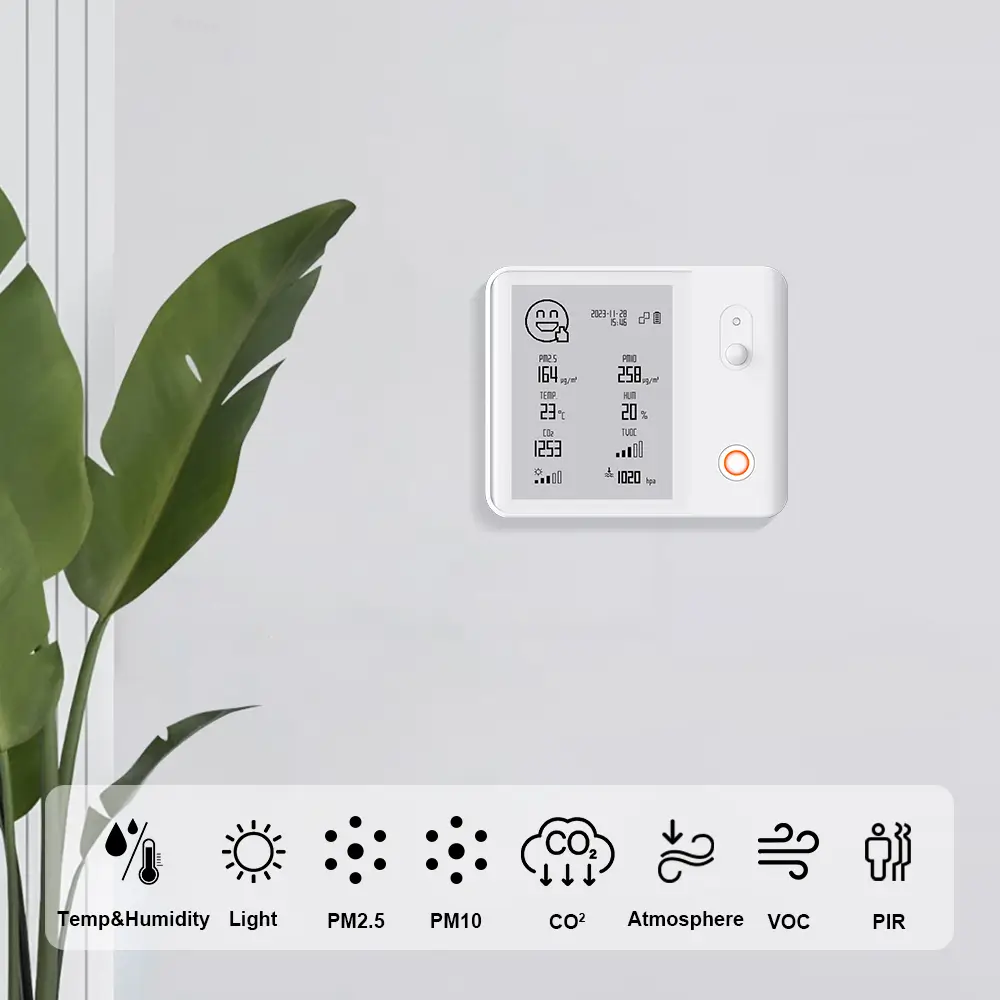
What’s Next: The Future of Connected Air Quality
The technology keeps improving. Here's what I'm seeing on the horizon:
Better Integration: New protocols are making it easier for devices from different manufacturers to work together seamlessly.
Predictive Capabilities: Systems are getting better at anticipating problems before they occur, using weather data, pollen forecasts, and local air quality predictions.
Health Monitoring: Some systems now integrate with wearable devices to adjust air quality based on family members' actual health metrics.
Energy Optimization: AI is getting smarter about balancing air quality goals with energy efficiency, automatically finding the sweet spot for each family's priorities.
Simplified Installation: Plug-and-play components are making it easier for families to expand their systems without professional help.
The families who build these systems now are positioning themselves ahead of a trend that will eventually reach every household. They're not just buying equipment – they're investing in their family's long-term health and comfort.
Your Action Plan: 5 Simple Next Steps
If you're ready to explore this for your family, here's what I recommend:
-
Start with assessment: Get a portable air quality monitor and test your home for a week. You might be surprised by what you discover.
-
Identify your biggest challenges: Is it allergies? Cooking odors? Dry air? Wildfire smoke? Focus on your primary concerns first.
-
Plan your foundation: Choose your main purifier, humidity control, and smart hub. These three components will handle 80% of most families' needs.
-
Expand strategically: Add zone-specific solutions based on your assessment data and family priorities.
-
Automate gradually: Start with simple rules and add complexity as you learn how your system responds to different situations.
Remember, you're not just buying air purifiers – you're building a system that will protect your family's health for years to come. Take your time, do it right, and enjoy breathing easier in every room of your home.
Сноски
-
U.S. Census Bureau Housing Statistics. ↩
-
Cost-Benefit Analysis of Air Purification Systems. Building and Environment Journal. ↩
-
Pediatric Asthma and Indoor Air Quality Study. Journal of Allergy and Clinical Immunology. ↩
-
HisoAir Air Quality Monitor. ↩
-
Indoor Humidity Guidelines. Mayo Clinic. ↩
-
Air Quality and Cognitive Performance. Harvard Business Review. ↩
-
Smart Home Air Quality Technology Trends. International Association of Indoor Air Quality. ↩
-
Indoor Air Quality Health Impact Study. American Lung Association. ↩


